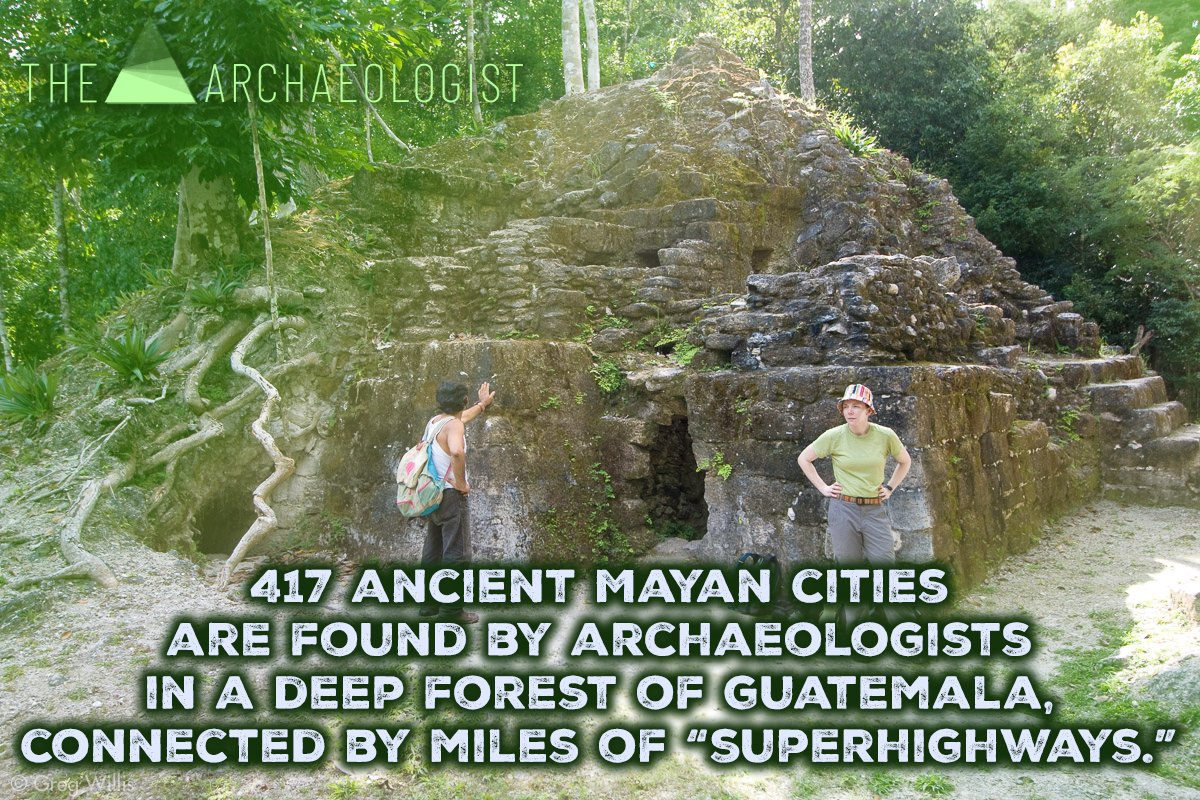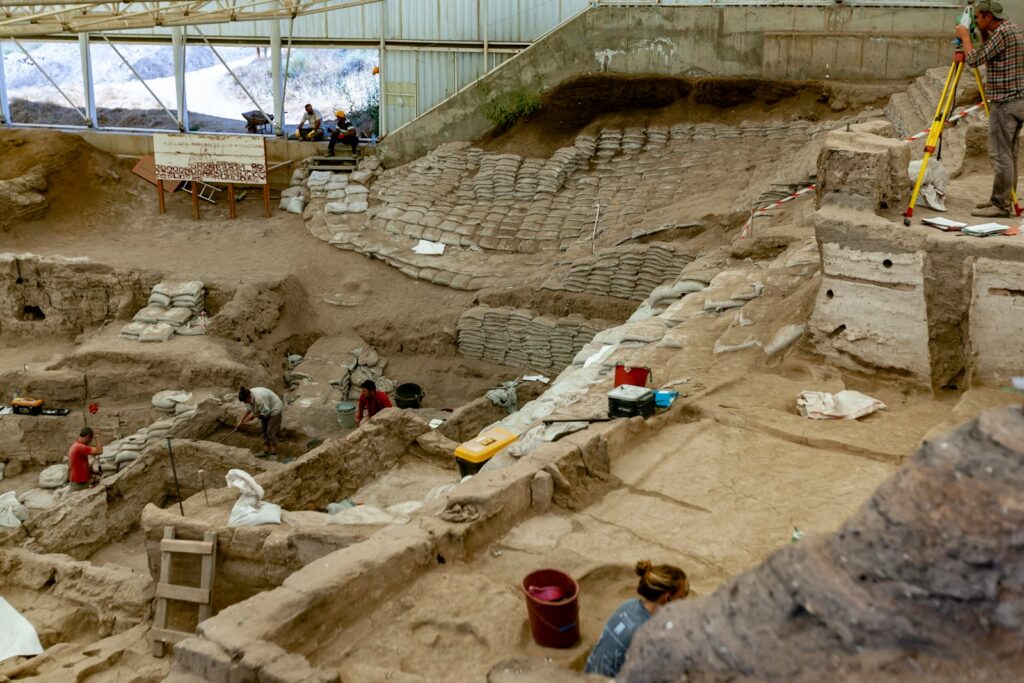
The whispers of the past often lie buried beneath layers of earth and time, waiting for curious minds to unearth their stories. From the earliest human migrations across vast continents to the genesis of complex civilizations, the chronicle of our species is largely an unwritten epic. It is in this profound silence of history that archaeology emerges as a beacon, offering us the tools and insights to reconstruct the lives, cultures, and profound transformations that shaped humanity long before the advent of the written word. It is a discipline that transcends mere digging, delving into the intricate tapestry of human activity through the meticulous recovery and analysis of material culture.
Far from being a solitary pursuit, archaeology thrives at the crossroads of multiple academic paths, drawing strength from both the rigorous analysis of the social sciences and the insightful interpretations of the humanities. Whether considered an independent academic pursuit or intertwined with anthropology, history, or geography, its essence remains the same: to systematically investigate and understand our shared human heritage. This comprehensive journey through time involves a fascinating blend of surveying, excavation, and sophisticated data analysis, all underpinned by a cross-disciplinary reliance on diverse fields of knowledge. It is a continuous quest to piece together the mosaic of human existence, from the ancient echoes of the Paleolithic to the tangible remnants of recent decades.
In this extensive exploration, we embark on a quest to illuminate the multifaceted world of archaeology. We will trace its remarkable evolution from rudimentary curiosity to a sophisticated scientific endeavor, highlight the visionary individuals who forged its foundational methodologies, and understand the profound purpose that drives archaeologists worldwide. Our journey will reveal the core phases that define every archaeological investigation, laying the groundwork for appreciating the intricate dance between human ingenuity and the enduring traces we leave behind.
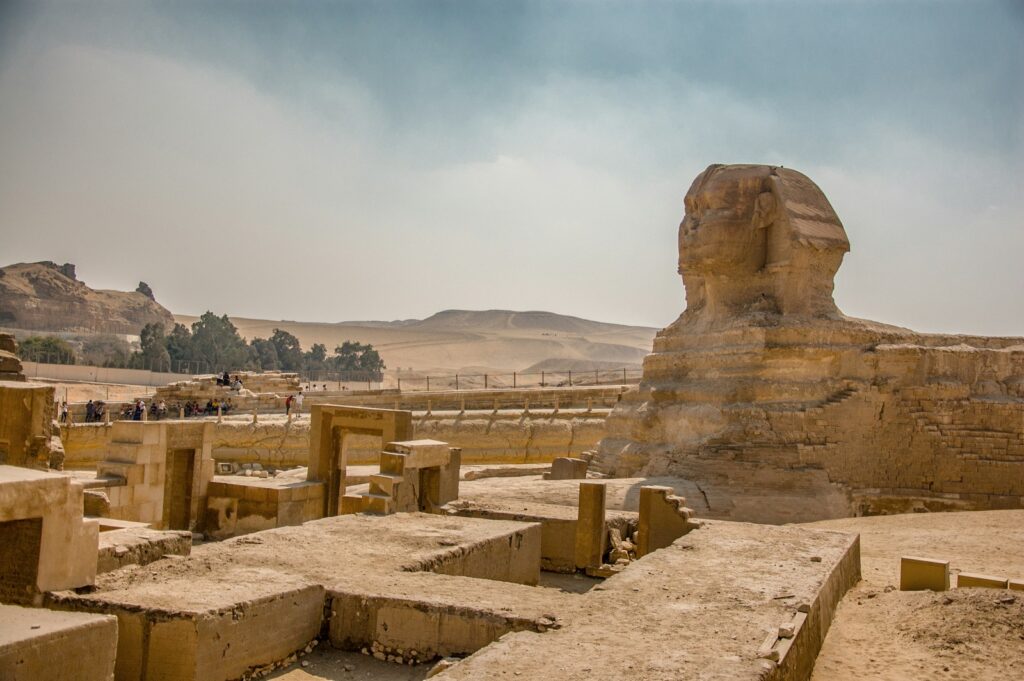
1. **Archaeology: The Science of Unearthing Human History**At its core, archaeology is the “study of human activity through the recovery and analysis of material culture.” This encompasses a vast array of evidence, including artifacts, intricate architecture, biological remnants known as biofacts or ecofacts, entire sites, and even subtly shaped cultural landscapes. It is a field uniquely positioned at the intersection of discovery and interpretation, offering a tangible connection to those who walked the earth before us, making it both a rigorous social science and a deeply humanistic endeavor that seeks to understand the very fabric of past societies.
While often standing as an independent academic discipline, archaeology frequently finds itself intertwined with anthropology, particularly in North America, as well as history or geography. Regardless of its specific classification within academic structures, the discipline consistently relies on a methodical approach. This process invariably involves preliminary surveying to understand a site’s potential, careful excavation to uncover buried evidence, and rigorous analysis of the collected data to build a more complete picture of the past. Its very nature necessitates a broad, cross-disciplinary research approach, drawing insights from various scientific and humanistic fields.
The chronological sweep of archaeological inquiry is immense, stretching from the very dawn of humanity’s technological ingenuity. Archaeologists study human prehistory and history, beginning with “the development of the first stone tools at Lomekwi in East Africa 3.3 million years ago” and extending right up “until recent decades.” This vast timeline distinguishes it clearly from palaeontology, which focuses specifically on the study of fossil remains, though both disciplines deal with remnants of ancient life forms. Archaeology’s unique strength lies in its ability to shed light on societies that left no written records, a period encompassing over 99% of the human past.
For the vast expanse of prehistory—from the Paleolithic era until literacy emerged in various societies around the globe—archaeology provides the only window into human experiences. Its goals are diverse and profound, ranging from a fundamental “understanding culture history” to the intricate “reconstructing past lifeways” and the essential task of “documenting and explaining changes in human societies through time.” Truly, the term archaeology, derived from Greek, means nothing less than “the study of ancient history,” a mission it fulfills with unparalleled dedication and scientific rigor.
Read more about: Rewriting Human History: Unearthing Ancient Civilizations Through Archaeology
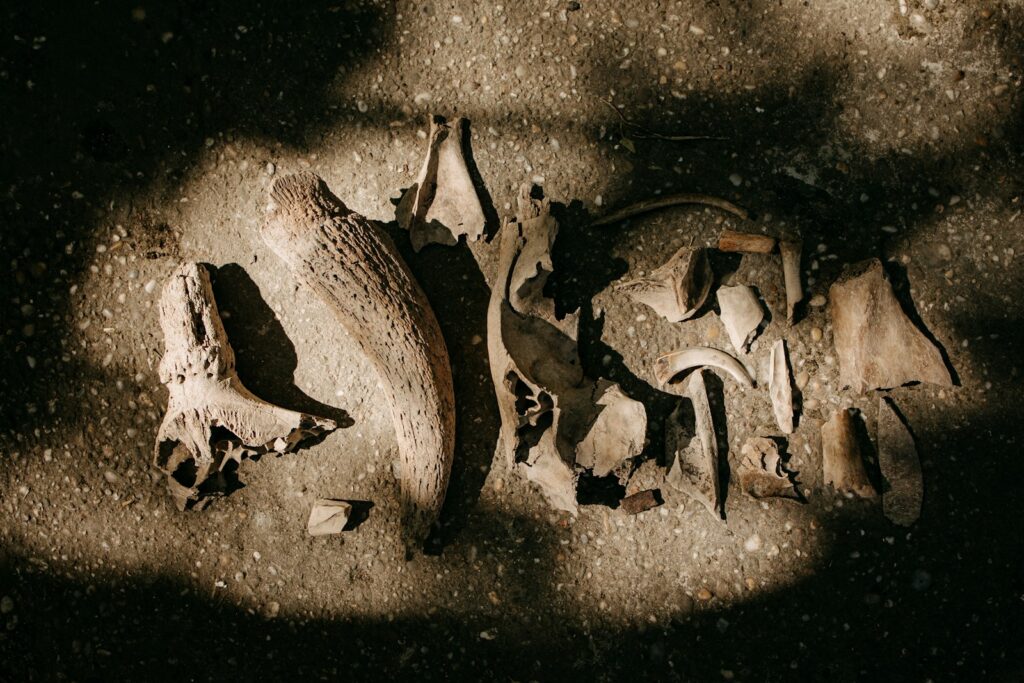
2. **From Antiquarian Curiosity to Academic Discipline: The Evolution of Archaeology**The sophisticated science of archaeology we recognize today has its roots in a much older, less structured pursuit known as antiquarianism. This precursor flourished in Europe during the 19th century, with its practitioners, the antiquarians, studying history through a particular focus on ancient artifacts, manuscripts, and historical sites. Their approach was fundamentally empirical, encapsulated by the 18th-century antiquary Richard Colt Hoare’s motto: “We speak from facts, not theory,” a sentiment that laid early groundwork for evidence-based study.
Remarkably, the earliest documented instance resembling archaeological practice dates back to Ancient Mesopotamia. Around 550 BC, King Nabonidus, often hailed as the first archaeologist, undertook excavations that led to the discovery and analysis of “a foundation deposit of the Akkadian Empire ruler Naram-Sin (ruled c. 2200 BC).” Not content with mere discovery, he meticulously sought out and restored the foundation deposits of temples in Sippar and Harran, and was even the first to attempt to date an archaeological artifact, a testament to his proto-scientific curiosity, despite his estimate being inaccurate by about 1,500 years due to the lack of modern dating technology.
Beyond Mesopotamia, the seeds of systematic archaeological thought began to sprout during the Enlightenment in Europe during the 17th and 18th centuries. Simultaneously, in Imperial China during the Song dynasty (960–1279), figures such as Ouyang Xiu and Zhao Mingcheng were establishing a tradition of Chinese epigraphy. They meticulously investigated, preserved, and analyzed ancient Chinese bronze inscriptions from the Shang and Zhou periods, contributing significantly to a deep understanding of their cultural past, though such pursuits were then considered a branch of historiography rather than a distinct discipline.
In Renaissance Europe, a philosophical reawakening to Greco-Roman civilization sparked renewed interest in ancient remains. Cyriacus of Ancona, a restless Italian humanist and antiquarian, earned the title of *pater antiquitatis* (‘father of antiquity’) from his contemporaries, and is today recognized as the “father of classical archaeology.” His extensive travels throughout Greece and the Eastern Mediterranean saw him record ancient buildings, statues, and inscriptions, including then-unknown wonders like the Parthenon, Delphi, and the Egyptian pyramids, meticulously documented in his six-volume diary, *Commentaria*.
Similarly, Flavio Biondo, another Italian Renaissance humanist historian, produced a systematic guide to the ruins and topography of ancient Rome in the early 15th century, solidifying his reputation as an early founder of archaeology. Later, 16th-century English antiquarians like John Leland and William Camden conducted comprehensive surveys of the countryside, documenting and interpreting the monuments they encountered. It wasn’t until 1824 that the *Oxford English Dictionary* first cited “archaeologist,” eventually replacing “antiquarian” as the common term, reflecting the gradual transformation of a curious pastime into a recognized academic discipline.
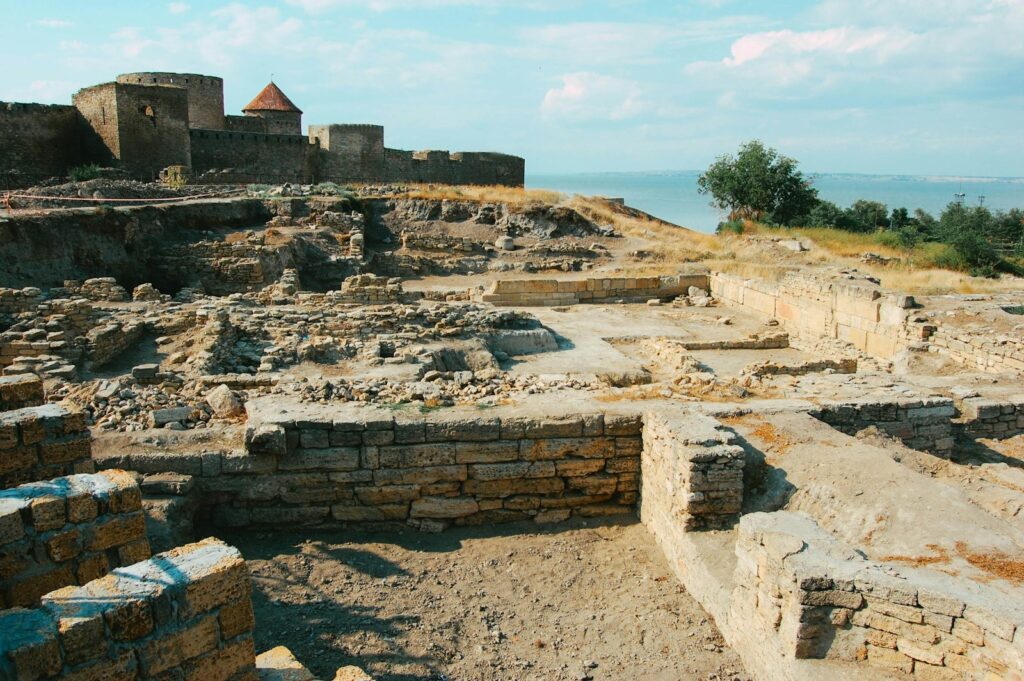
3. **Pioneers of the Spade: Shaping Modern Archaeological Methodologies**The earliest archaeological excavations, while monumental in their discoveries, often lacked the systematic rigor we associate with modern practice. For instance, the Spanish military engineer Roque Joaquín de Alcubierre began excavations at the ancient towns of Pompeii and Herculaneum in 1738 and 1748 respectively, revealing entire towns frozen in time by Mount Vesuvius’s eruption in AD 79. While these unearthings captivated Europe, bringing to light utensils, frescos, and even human shapes, the methods employed were largely haphazard, overlooking crucial concepts like stratification and context.
It was in the mid-18th century that figures like the German Johann Joachim Winckelmann began to lay the intellectual groundwork for scientific archaeology. Living in Rome and immersed in the study of Roman antiquities, Winckelmann developed an unparalleled knowledge of ancient art. After visiting the excavations at Pompeii and Herculaneum, he pioneered the application of “categories of style on a large, systematic basis to the history of art,” and was among the first to “separate Greek art into periods and time classifications.” His contributions were so profound that he is celebrated as both “The prophet and founding hero of modern archaeology” and the father of art history.
The actual techniques of excavation saw significant advancements with individuals such as William Cunnington, often regarded as the father of archaeological excavation. From around 1798, Cunnington undertook meticulous excavations of Neolithic and Bronze Age barrows in Wiltshire, funded by Sir Richard Colt Hoare. His detailed recordings and the categorical terms he developed are still in use today. Even future U.S. President Thomas Jefferson contributed, employing a trench method in 1784 to excavate Native American burial mounds in Virginia, and through careful observation, he concluded that the mounds were indeed raised by the ancestors of contemporary Native Americans.
A pivotal achievement of 19th-century archaeology was the integration of stratigraphy, an idea borrowed from the geological and palaeontological work of scholars like William Smith, James Hutton, and Charles Lyell. This concept, recognizing that overlapping layers (strata) represent successive periods, was systematically applied to archaeological sites by figures such as Jacques Boucher de Perthes and Christian Jürgensen Thomsen, who began to chronologically order artifacts. This marked a significant shift from simple recovery to a deeper, time-sensitive understanding of human occupation.
The late 19th and early 20th centuries saw the emergence of truly scientific approaches. Army officer Augustus Pitt Rivers, commencing excavations in the 1880s, is widely regarded as the first scientific archaeologist due to his highly methodical standards. He introduced systematic arrangement of artifacts by type or “Typology (archaeology)” and chronologically within those types, emphasizing “that all artifacts, not just beautiful or unique ones, be collected and catalogued.” William Flinders Petrie, dubbed the “Father of Archaeology,” further refined this by emphasizing meticulous recording and comparative study, remarking that he believed “the true line of research lies in the noting and comparison of the smallest details.” Petrie revolutionized Egyptology by developing a system for dating layers based on pottery and ceramic findings and famously mentored Howard Carter. Later, Sir Mortimer Wheeler, with his highly disciplined approach and systematic coverage in the 1920s and 1930s, developed the influential grid system of excavation, further improved by his student Kathleen Kenyon, cementing the professionalization of the field that would lead to its study in universities worldwide.
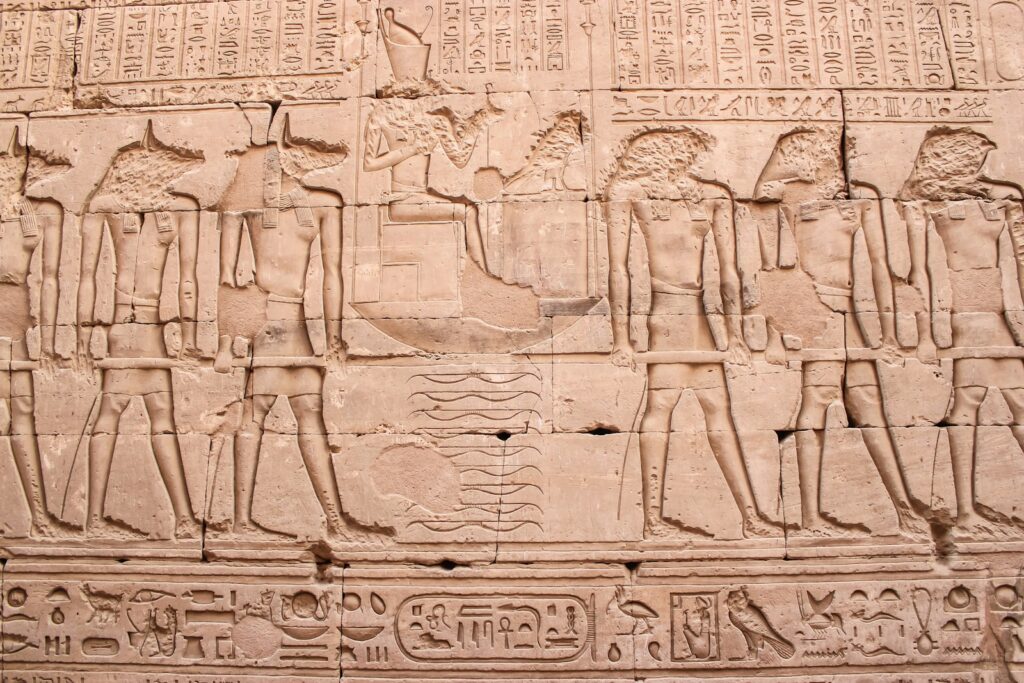
4. **Beyond the Written Word: The Profound Purpose of Archaeological Inquiry**The fundamental purpose of archaeology extends far beyond mere treasure hunting; it is to “learn more about past societies and the development of the human race.” This pursuit is particularly vital for understanding prehistoric cultures, which represent over 99% of human development. Because these ancient societies did not utilize writing, there are no written records for historians to study. Without the unique insights provided by archaeology, our knowledge of these vast stretches of human history would be almost entirely blank, leaving us with a severely incomplete understanding of our origins.
Archaeology uniquely illuminates some of the most critical developments in human history. It traces the incredible evolution of humanity during the Paleolithic period, detailing how hominins evolved from australopithecines in Africa and eventually transformed into modern Homo sapiens. Furthermore, archaeological discoveries shed light on humanity’s most transformative technological advances, including the mastery of fire, the development of sophisticated stone tools, the pivotal discovery of metallurgy, the nascent stirrings of religion, and the revolutionary birth of agriculture. Without archaeological evidence, our understanding of humanity’s material culture prior to the invention of writing would be virtually nonexistent.
However, the utility of archaeology is not confined to prehistoric, pre-literate cultures alone. Through the specialized sub-discipline of historical archaeology, the field also provides invaluable insights into historic, literate cultures. For many ancient societies like Ancient Greece and Mesopotamia, their surviving written records are often incomplete and inherently biased. Literacy was frequently restricted to elite classes—such as the clergy, the court bureaucracy, or temple officials—whose interests and worldviews often diverged significantly from the daily lives and concerns of the general populace.
Written records, therefore, tend to reflect the biases, assumptions, cultural values, and even deliberate deceptions of a limited segment of society. Writings produced by individuals more representative of the broader population were unlikely to be preserved for posterity in elite libraries. Consequently, these records “cannot be trusted as a sole source” for understanding an entire society. In contrast, the material record, unearthed by archaeologists, often provides a “closer to a fair representation of society,” though it too is subject to its own biases, such as sampling bias and differential preservation, which archaeologists carefully account for.
Across millennia, countless cultures, societies, and billions of people have lived and vanished, leaving little to no written documentation. The invention of writing, as we know it today, did not emerge until the 4th millennium BC, and then only in a relatively small number of technologically advanced civilizations. In stark contrast, Homo sapiens has existed for at least 200,000 years, with other Homo species preceding them for millions. Thus, much of what we know about the crucial early years of human civilization—the development of agriculture, the nuances of folk religion, and the rise of the first cities—comes exclusively from archaeological investigation. While archaeological remains also hold political, cultural, monetary, or aesthetic value, the true scientific purpose lies in the rigorous reconstruction of past societies, moving beyond the popular, often unrealistic, portrayals seen in works of fiction.

5. **Navigating the Past: Core Phases of an Archaeological Investigation**Every archaeological investigation, whether a small-scale survey or a major excavation, follows a structured and systematic approach, moving through several distinct phases. This methodical process ensures that efforts are efficient, ethical, and ultimately yield the most comprehensive understanding of a site. Before any practical fieldwork commences, the most critical initial step is to establish “a clear objective as to what the archaeologists are looking to achieve.” This foundational objective guides every subsequent decision and action, ensuring that resources are allocated purposefully and research questions are addressed effectively.
Once the research objectives are firmly in place, the first major phase of fieldwork often begins with a thorough survey of the chosen site and its surrounding area. This phase is designed to “find out as much as possible about it and the surrounding area” without extensive disturbance. Surveying allows archaeologists to identify potential sites, map features visible on the surface, and gather preliminary data that informs whether or not a full-scale excavation is warranted. It’s a crucial reconnaissance mission, providing a broad overview before committing to more intensive, and destructive, methods.
Following a successful survey, or sometimes as the direct answer to initial research questions, an excavation may be initiated. This phase involves carefully uncovering “any archaeological features buried under the ground.” Excavation is a meticulous process that requires precision and careful documentation, as it inherently involves the destruction of the archaeological context. Modern excavation techniques emphasize the precise recording of objects’ provenance or provenience (their exact horizontal and vertical locations) and their association (relationship with nearby objects), allowing archaeologists to deduce how artifacts were used together and how different periods of activity are stratified.
The final, yet often most time-consuming, phase of an archaeological investigation is the analysis of the information collected during the survey and excavation. This intensive period of study involves scrutinizing every artifact, feature, and data point in an attempt to “achieve the original research objectives of the archaeologists.” It is here that raw data is transformed into coherent narratives about past human activity, lifeways, and cultural developments, requiring a synthesis of scientific methods and interpretive frameworks.
To ensure the wider academic community benefits from these discoveries and interpretations, it is considered “good practice for the information to be published so that it is available to other archaeologists and historians.” This critical step allows for peer review, further research, and the integration of new findings into the ever-growing tapestry of human history. While sometimes neglected due to resource constraints, the dissemination of findings is essential to the collaborative and cumulative nature of archaeological knowledge, ensuring that the stories unearthed from the earth continue to educate and enlighten generations to come.
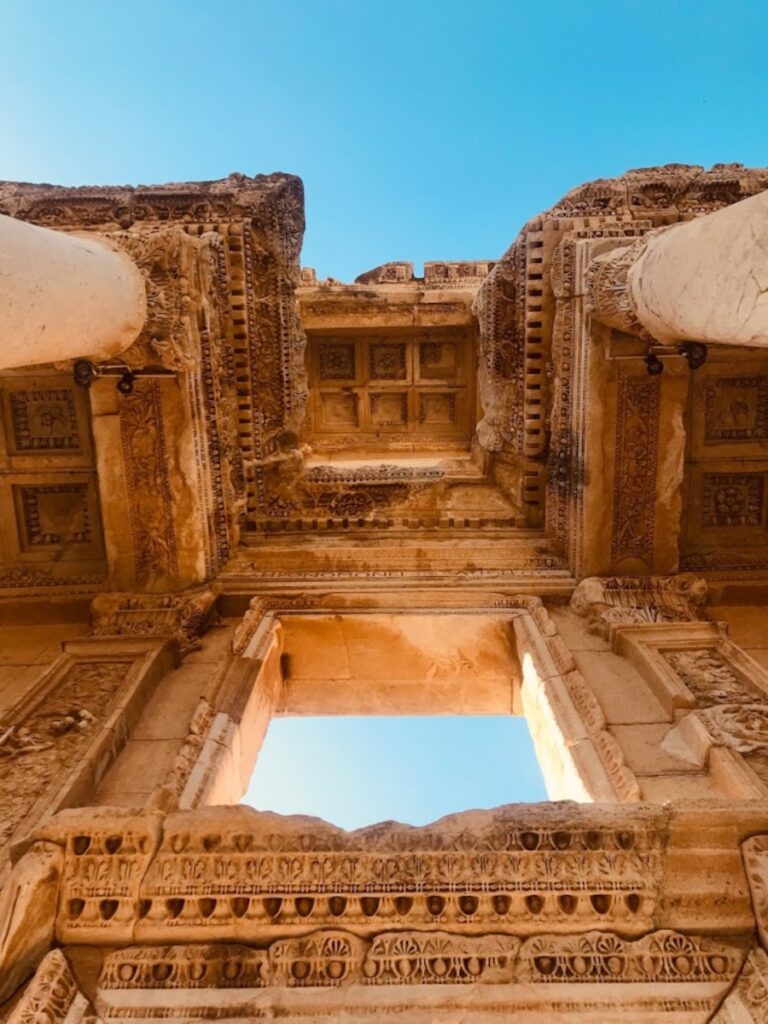
6. **Remote Sensing: Peeking Beneath the Surface Without a Spade**Before the first spade breaks ground, archaeologists are increasingly leveraging advanced technologies to glimpse the secrets hidden beneath the earth’s surface, a suite of techniques collectively known as remote sensing. This preliminary stage is vital for understanding a site’s potential and its broader context without extensive disturbance. Remote sensing instruments broadly fall into two categories: passive, which detect natural energy reflected or emitted from a scene, and active, which emit energy and record what is reflected back, offering a powerful, non-invasive way to survey vast or challenging landscapes.
One such active instrument making waves in archaeological discovery is Lidar, an acronym for Light Detection and Ranging. This sophisticated technology employs a laser to transmit pulses of light, while sensitive receivers measure the backscattered or reflected light. By precisely recording the time between the transmitted and reflected pulses, and knowing the speed of light, Lidar can accurately calculate the distance to objects. Beyond just mapping ground surfaces, Lidar is even capable of determining atmospheric profiles of aerosols, clouds, and other atmospheric constituents, providing an unparalleled view of the environment.
Building on Lidar’s capabilities, laser altimeters utilize this same technology to precisely measure the height of the instrument platform above the surface. When combined with independent knowledge of the platform’s height relative to the mean Earth’s surface, these instruments can generate remarkably detailed topographical maps of the underlying terrain. This allows archaeologists to create intricate three-dimensional models of landscapes, revealing subtle features that might be invisible at ground level, from ancient roads and agricultural systems to hidden settlement patterns.
Perhaps one of the most transformative tools in recent years has been the widespread adoption of drones. These unmanned aerial vehicles are revolutionizing survey work, dramatically speeding up the process and providing a dynamic means to protect vulnerable sites from squatters, builders, and miners. In Peru, for instance, small, agile drones have enabled researchers to produce sophisticated three-dimensional models of ancient Peruvian sites in days or weeks, a task that previously took months or even years using traditional methods.
Remarkably, drones costing as little as £650 have proven incredibly useful, demonstrating that cutting-edge archaeology doesn’t always require an exorbitant budget. In 2013, drones were flown over at least six Peruvian archaeological sites, including the high-altitude colonial Andean town of Machu Llacta, nestled 4,000 meters (13,000 ft) above sea level. While altitude presents ongoing challenges in the thin Andean air, plans are already underway to develop drone blimps, employing open-source software, to overcome these limitations and continue pushing the boundaries of aerial reconnaissance. As Jeffrey Quilter, an archaeologist with Harvard University, aptly puts it, “You can go up three metres and photograph a room, 300 metres and photograph a site, or you can go up 3,000 metres and photograph the entire valley,” showcasing the incredible versatility and scale that drones bring to archaeological exploration. Further demonstrating their utility, in September 2014, drones weighing approximately 5 kg (11 lb) were deployed for 3D mapping the above-ground ruins of the Greek city of Aphrodisias, with the collected data undergoing rigorous analysis by the Austrian Archaeological Institute in Vienna.

7. **Field Survey: Mapping the Footprints of the Past**Once remote sensing provides a preliminary overview, the archaeological project often moves into the realm of field survey, a methodical process designed to systematically locate and map features of interest within a given region or site. This phase can either continue from initial remote sensing efforts or serve as the starting point for investigations. Regional survey specifically aims to uncover previously unknown sites across a broad area, while site survey focuses on pinpointing specific features like ancient houses or middens within an already identified location, employing largely similar methodologies for both objectives.
In the nascent days of archaeology, comprehensive survey was not a widespread practice. Early cultural historians and researchers often contented themselves with acquiring knowledge of monumental sites from local populations, then proceeding directly to excavate only the most plainly visible features. This approach began to shift dramatically with Gordon Willey, who pioneered the technique of regional settlement pattern survey in Peru’s Viru Valley in 1949, marking a crucial turning point. The widespread adoption of systematic survey at all levels truly gained prominence with the ascent of processual archaeology some years later, recognizing its indispensable value in understanding broader human settlement strategies.
Field survey offers a myriad of benefits, particularly when conducted as a precursor to—or even in place of—full-scale excavation. It demands relatively less time and expense, as it avoids the extensive and costly process of sifting through vast volumes of soil to retrieve artifacts. This makes it an efficient approach, though surveying expansive regions or sites can still be costly, often necessitating the use of sampling methods to manage resources effectively. Crucially, as a non-destructive form of archaeology, survey sidesteps many of the ethical considerations, particularly those pertaining to descendant communities, associated with the inherent destruction of a site during excavation. Moreover, it stands as the sole method for gathering certain types of invaluable information, such as regional settlement patterns and the intricate structure of ancient communities, with the collected data commonly compiled into detailed maps illustrating surface features and artifact distributions.
At its most fundamental, surface survey involves methodically combing an area, most commonly on foot but occasionally utilizing mechanized transport, to meticulously search for features or artifacts visible on the surface. While highly effective for surface-level findings, this technique has limitations; it cannot detect sites or features that are entirely buried beneath earth or obscured by dense vegetation. To overcome some of these limitations, surface survey may also incorporate mini-excavation techniques such, as the use of augers, corers, and shovel test pits, allowing for shallow subsurface probing. Should no materials be unearthed, the surveyed area is typically designated as archaeologically sterile.
Elevating the vantage point, aerial survey utilizes cameras mounted on a variety of platforms—including airplanes, balloons, Unmanned Aerial Vehicles (UAVs), or even kites. This bird’s-eye perspective is exceptionally useful for the rapid mapping of large or intricately complex sites, offering a macro-level view that reveals patterns often imperceptible from the ground. Aerial photographs serve not only to document the ongoing status of an archaeological dig but also possess the remarkable ability to detect numerous features invisible from the surface. For instance, plants growing directly above a buried human-made structure, such as a robust stone wall, will often exhibit stunted growth, developing more slowly. Conversely, vegetation situated above features like ancient middens, which are rich in organic nutrients, may flourish and develop more rapidly, creating distinctive crop marks. Photographs of ripening grain, which undergoes rapid color changes during maturation, have proven particularly effective in revealing the precise outlines of buried structures. Furthermore, taking aerial photographs at varying times of day can exploit changing shadows, which dramatically highlight the subtle contours of submerged structures. Modern aerial survey also incorporates sophisticated imaging techniques utilizing ultraviolet, infrared, ground-penetrating radar wavelengths, Lidar, and thermography, broadening its investigative scope considerably.
Delving even deeper beneath the surface, geophysical survey offers one of the most effective means to ‘see’ what lies underground without actual digging. Magnetometers, for example, are highly sensitive instruments that detect minute deviations in the Earth’s magnetic field. These anomalies can be caused by the presence of iron artifacts, ancient kilns, certain types of stone structures, and even the subtle disturbances left by ditches and middens. Similarly, devices that measure the electrical resistivity of the soil are widely employed. Archaeological features whose electrical resistivity contrasts markedly with that of the surrounding soils can be detected and precisely mapped. For instance, features composed of dense materials like stone or brick typically exhibit higher resistivity than common soils, whereas organic deposits or unfired clay tend to have lower resistivity, creating distinct signatures for archaeologists to interpret.
While some archaeologists harbor reservations, viewing the use of metal detectors as bordering on treasure hunting, many others now consider them an incredibly effective and legitimate tool in archaeological surveying. Formal archaeological applications of metal detectors include the meticulous analysis of musketball distributions on English Civil War battlefields, detailed metal distribution analysis conducted prior to the excavation of 19th-century shipwrecks, and locating service cables during site evaluations. In the United Kingdom, metal detectorists have been actively engaged and solicited for their involvement in the Portable Antiquities Scheme, a program that encourages the voluntary recording of archaeological finds, demonstrating a collaborative approach. For underwater archaeology, regional survey utilizes specialized geophysical and remote sensing devices such as marine magnetometers, side-scan sonar, and sub-bottom sonar, extending the reach of discovery into submerged landscapes.
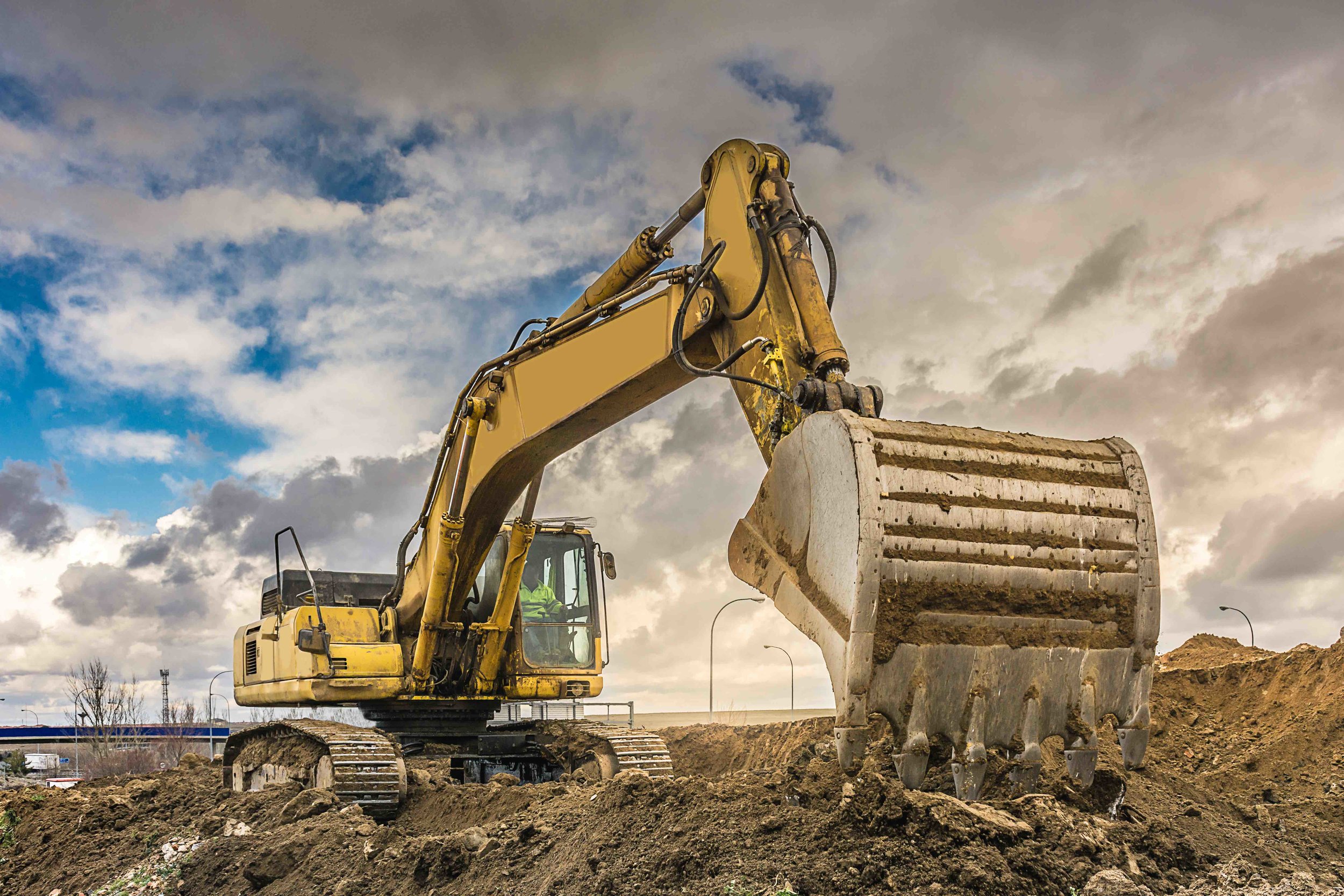
8. **Excavation: The Art and Science of Uncovering Buried Worlds**Despite the remarkable advancements in remote sensing and non-destructive survey, archaeological excavation remains the cornerstone of data recovery in most field projects, offering unique insights that are often inaccessible through other means. Even in the field’s amateur days, excavation existed, and today it continues to reveal crucial types of information: detailed stratigraphy, the three-dimensional structure of a site, and, perhaps most importantly, verifiably primary context—the undisturbed original placement of artifacts and features as they were left by past inhabitants.
Modern excavation techniques are characterized by an unwavering commitment to precision and meticulous documentation. A fundamental requirement is the exact recording of objects and features’ provenance or provenience, which refers to their precise horizontal and vertical locations within the site. Equally vital is the recording of their association, which defines their relationship with nearby objects and features. This rigorous approach allows archaeologists to intricately deduce which artifacts and features were likely used contemporaneously and together, providing invaluable clues about past human activities and distinguishing them from elements belonging to different phases of occupation.
However, excavation is unequivocally the most expensive phase of archaeological research, particularly in relative terms. Beyond the financial investment, it carries significant ethical concerns due to its inherently destructive nature. Once a site is excavated, its original context is irrevocably altered. Consequently, very few sites are ever excavated in their entirety. The percentage of a site that is excavated often depends heavily on the specific country’s regulations and the ‘method statement’ issued for the project. Therefore, sampling becomes even more critical in excavation than it is in preliminary surveys, ensuring that investigative efforts are targeted and responsible.
In some instances, particularly when dealing with extensive overlying deposits, large mechanical equipment, such as backhoes (JCBs), may be cautiously employed. This is typically done to remove the topsoil, or ‘overburden,’ allowing archaeologists to quickly reach the archaeologically significant layers beneath. However, this method is increasingly used with great care and precision to minimize disturbance to the deeper, more sensitive deposits. Following this initial, often dramatic, step, the exposed area is then meticulously hand-cleaned using trowels or hoes. This careful process ensures that all subtle features, such as postholes, hearths, or ancient floor surfaces, become clearly apparent and can be accurately identified.
Once the features are clearly defined, the next crucial task is to formulate a comprehensive site plan, which then guides the specific method of excavation. Features that have been dug into the natural subsoil, such as pits, postholes, or ditches, are typically excavated in portions. This deliberate approach allows archaeologists to produce a visible archaeological section—a vertical slice through the feature—which is then meticulously drawn, photographed, and recorded. Each feature, whether a pit or a ditch, comprises two fundamental parts: the ‘cut’ and the ‘fill.’ The ‘cut’ precisely describes the edge of the feature, where it interfaces with the natural, undisturbed soil, forming its boundary. The ‘fill,’ conversely, is the material that has accumulated within the feature over time and will often appear distinctly different from the surrounding natural soil. Both the cut and the fill are assigned consecutive numbers for rigorous recording purposes.
Throughout the excavation, scaled plans and sections of individual features are painstakingly drawn directly on site. Both black and white and color photographs are taken to provide visual documentation, and detailed recording sheets are meticulously filled in, describing the context of each find. All this collected information, from drawings and photographs to detailed written descriptions, serves as a permanent record of the now-destroyed archaeology. It is this comprehensive dataset that forms the foundation for subsequent analysis, enabling archaeologists to accurately describe, interpret, and ultimately reconstruct the intricate stories of past human activity at the site.
Read more about: Archaeology’s Enduring Mysteries: A Deep Dive into Humanity’s Past Through the Lens of Material Culture
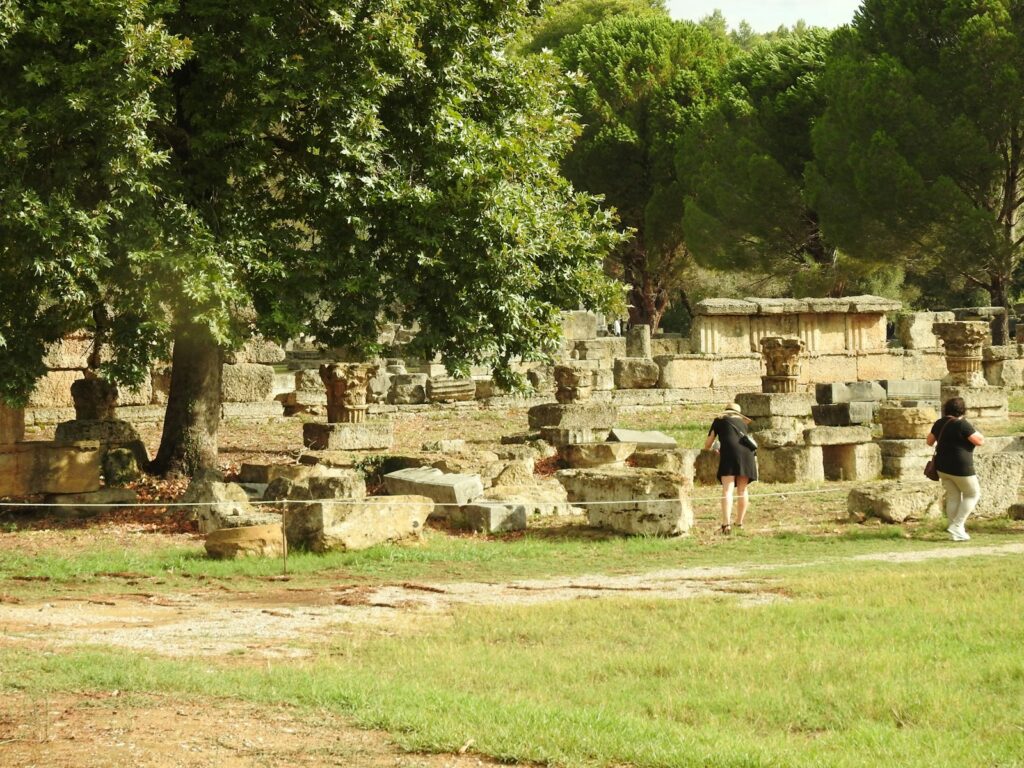
9. **Post-Excavation Analysis: Decoding the Echoes of Antiquity**Once the rigorous and often physically demanding work of excavation is complete, or artifacts have been systematically collected from surface surveys, the real intellectual journey begins: post-excavation analysis. This extensive and usually the most time-consuming part of an archaeological investigation involves the meticulous study of every recovered object and structure. It is not at all uncommon for the final excavation reports for major sites to require years, or even decades, to be fully published, underscoring the depth and complexity of this crucial phase.
At the foundational level of analysis, the artifacts unearthed are carefully cleaned, catalogued, and then systematically compared to existing published collections and typologies. This comparative process is essential, often involving the classification of artifacts typologically—grouping them by form, material, and function—and identifying other archaeological sites that share similar artifact assemblages. Such comparisons help establish chronological relationships and cultural connections across different regions and time periods, allowing archaeologists to place their finds within a broader historical and cultural framework.
However, modern archaeology goes far beyond basic classification, with a much more comprehensive range of analytical techniques available through archaeological science. These advanced methods mean that artifacts can be precisely dated, offering absolute or relative chronologies, and their compositions can be thoroughly examined. For instance, techniques like X-ray fluorescence or mass spectrometry can reveal the elemental makeup of pottery, metals, or even tools, providing clues about trade networks, technological capabilities, and resource acquisition in ancient societies.
Beyond inanimate objects, biological remnants offer a wealth of information. Bones collected from a site can be meticulously analyzed using the methods of zooarchaeology, which sheds light on past human diet, animal domestication, hunting practices, and environmental conditions. Plant remains, from macroscopic seeds to microscopic phytoliths, are studied through paleoethnobotany, revealing ancient agricultural practices, foraging strategies, and vegetation landscapes. Pollen analysis, or palynology, provides invaluable insights into past climates and environments. Even stable isotopes, found in bones or teeth, can inform us about diet and migration patterns, while any discovered texts, where present, can often be painstakingly deciphered, adding the invaluable dimension of written narrative to the material record.
These sophisticated scientific techniques frequently provide information that would be impossible to ascertain through visual inspection or basic classification alone. They offer crucial data points that contribute immensely to a nuanced and multi-faceted understanding of a site, its inhabitants, their lifeways, and their interactions with their environment. The synergy between careful excavation and advanced laboratory analysis is what truly allows archaeologists to decode the silent echoes of antiquity and reconstruct the vibrant stories of human existence.
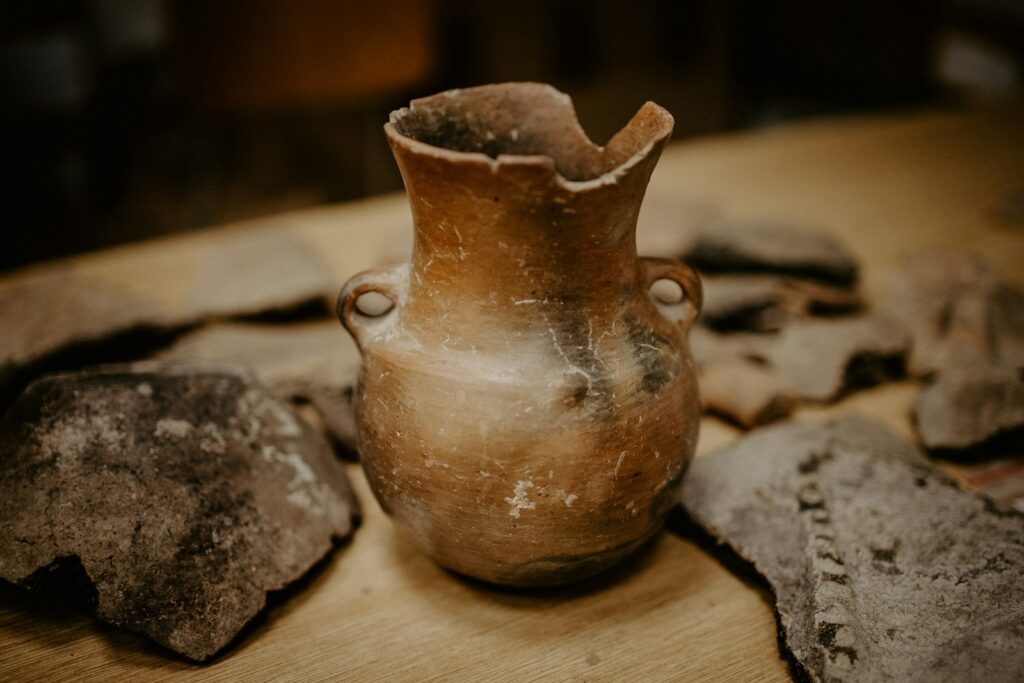
10. **Theoretical Frameworks in Archaeology: Beyond the Shovel**Archaeology, at its heart, is not merely about the recovery of objects; it is an interpretive science, and as such, it is deeply informed by a diverse array of theoretical frameworks. There is no singular approach to archaeological theory universally adhered to by all practitioners, reflecting the discipline’s intellectual dynamism. When archaeology first began to develop into a distinct field in the late 19th century, the initial theoretical paradigm was cultural-historical archaeology. This approach primarily sought to explain why cultures changed and adapted, moving beyond simply acknowledging the fact that they did, and thus emphasizing historical particularism—the idea that each culture follows its own unique developmental path shaped by its specific historical circumstances.
In the early 20th century, particularly among archaeologists studying past societies with direct, continuing links to existing indigenous groups—such as those of Native Americans, Siberians, or Mesoamericans—the direct historical approach gained prominence. This methodology involved comparing the continuity between archaeological remains and contemporary ethnic and cultural groups, providing a powerful means to understand ancient lifeways by drawing analogies from the present, carefully considering the unbroken threads of cultural tradition.
The 1960s witnessed a profound intellectual upheaval within archaeology, primarily led by American archaeologists such as Lewis Binford and Kent Flannery. This movement rebelled against the established cultural-history archaeology, proposing a “New Archaeology” that aimed to be more overtly “scientific” and “anthropological.” This paradigm, which became known as processual archaeology, placed immense importance on hypothesis testing and the rigorous application of the scientific method, seeking to uncover universal laws of cultural change and human behavior through a detached, objective lens.
However, by the 1980s, a new, postmodern movement emerged, challenging the tenets of processualism. Led by influential British archaeologists like Michael Shanks, Christopher Tilley, Daniel Miller, and Ian Hodder, this approach became known as post-processual archaeology. It fundamentally questioned processualism’s appeals to scientific positivism and impartiality, arguing instead for the critical importance of a more self-critical theoretical reflexivity. Post-processualists emphasized the role of individual agency, power dynamics, symbolism, and the subjective nature of interpretation, acknowledging that archaeologists themselves are not detached observers but are influenced by their own cultural contexts.
The debate between processualism and post-processualism continues to animate archaeological discourse, with each side offering valid critiques. Processualists often criticize post-processualism for perceived lack of scientific rigor, while post-processualists highlight the inherent biases and limitations of a purely positivist approach to human culture. Amidst this ongoing intellectual tension, another theoretical perspective, known as historical processualism, has emerged. This innovative approach seeks to synthesize the strengths of both paradigms, incorporating processualism’s focus on broad processes and scientific investigation while integrating post-processual archaeology’s vital emphasis on reflexivity and the nuanced understanding of historical context.
Today, archaeological theory is a rich tapestry, borrowing insights from an extraordinarily wide range of intellectual influences. This interdisciplinary approach includes systems theory, which views societies as interconnected systems, and neo-evolutionary thought, which examines patterns of cultural evolution. It also draws from phenomenology, focusing on human experience and perception of place; postmodernism, which critiques grand narratives; and agency theory, emphasizing individual actions. Cognitive science explores ancient thought processes, structural functionalism examines societal roles, and Marxism analyzes economic and power structures. Furthermore, gender-based and feminist archaeology, queer theory, postcolonial thoughts, materiality studies, and posthumanism all contribute to a nuanced, multifaceted, and ever-evolving understanding of the human past, ensuring that archaeological interpretations remain robust and relevant to contemporary global conversations.
Read more about: Archaeologists Uncover 115,000-Year-Old Human Footprints Where They Shouldn’t Be: A Deep Dive into the Science of Discovery
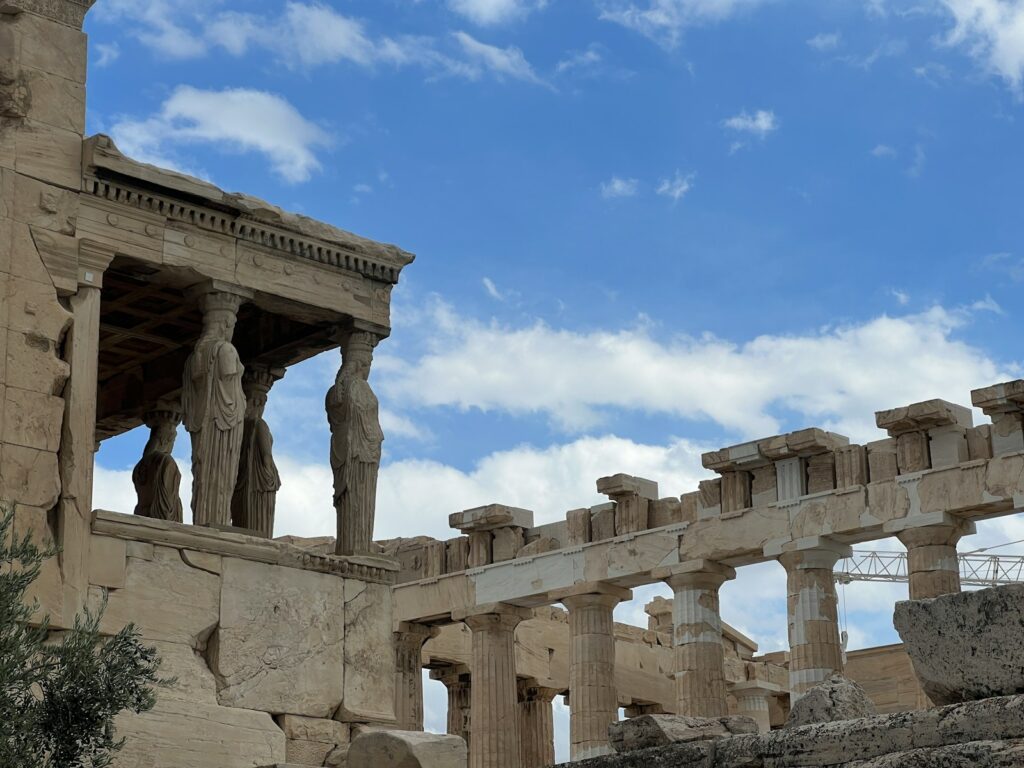
11. **Specialized Subfields of Archaeology: A Multiverse of Discovery**Just as the human experience is multifaceted, so too is the discipline of archaeology, giving rise to an impressive array of specialized sub-disciplines. These distinct areas of focus are often characterized by a specific method or type of material being studied—such as lithic analysis for stone tools, archaeobotany for ancient plant remains, or the study of music as a form of material culture. Others are defined by a particular geographical or chronological focus, giving us fields like Near Eastern archaeology, Islamic archaeology, or Medieval archaeology, each demanding unique expertise and historical knowledge. Still more are shaped by a thematic concern, such as maritime archaeology, which explores submerged sites, landscape archaeology, which examines human interaction with the environment, or battlefield archaeology, which uncovers the remnants of conflict. Finally, some subfields dedicate themselves to a specific archaeological culture or civilization, like Egyptology, Indology, or Sinology, requiring deep linguistic and cultural immersion.
One particularly illuminating sub-discipline is historical archaeology, which distinguishes itself by studying cultures that possessed some form of writing, dealing with objects and issues from the more recent past. This field bridges the gap between written records and the material evidence, often revealing aspects of past societies that official histories might omit or misrepresent. For instance, in medieval Europe, historical archaeologists have explored the illicit burial of unbaptized children, uncovering practices that often contradicted ecclesiastical decrees but were deeply ingrained in folk belief. Similarly, in downtown New York City, archaeologists exhumed the 18th-century remains of the African Burial Ground, providing a powerful and often painful material record of enslaved African individuals, their lives, and their communities, which were largely ignored or suppressed in official historical accounts. Even in modern contexts, such as when remnants of the WWII Siegfried Line were destroyed, emergency archaeological digs took place to preserve scientific knowledge and reveal intricate details of the line’s construction, underscoring the relevance of historical archaeology right up to recent decades.
Another crucial and highly influential subfield is ethnoarchaeology, which is defined as the ethnographic study of living people. Its primary design is to create a more robust framework for interpreting the archaeological record. By observing and documenting contemporary human behaviors, material culture, and how they interact with their environment, ethnoarchaeologists gain invaluable insights that help them infer and understand the activities and social structures of ancient populations. This approach first gained significant prominence during the processual movement of the 1960s, which emphasized scientific rigor and cross-cultural comparisons, and it continues to be a vibrant and integral component of both post-processual and other current archaeological approaches. While early ethnoarchaeological research often focused on hunter-gatherer or foraging societies, the scope of ethnoarchaeological inquiry has broadened considerably today, encompassing a much wider range of human behavior and cultural contexts, from agriculturalists to urban dwellers, providing nuanced analogies for interpreting the past.
Finally, experimental archaeology represents a dynamic application of the experimental method to archaeological questions. This subfield involves physically recreating ancient technologies, structures, or processes using authentic materials and techniques, often to understand the feasibility, labor requirements, or functional properties of past human endeavors. Whether it’s flintknapping ancient tools, constructing replica prehistoric dwellings, or sailing reconstructed ancient vessels, experimental archaeology offers tangible, hands-on insights into the practical realities faced by past societies, enriching our understanding of their capabilities and daily lives by literally walking in their footsteps.
From the foundational principles of uncovering buried fragments of time to the intricate dance of theoretical interpretation and the specialized lens of its diverse subfields, archaeology continues to be a vibrant and evolving discipline. It is a testament to humanity’s enduring curiosity, a meticulous quest to not only piece together the physical remnants of vanished civilizations but also to understand the very essence of what it means to be human across millennia. This profound journey ensures that the whispers of the past continue to resonate, enriching our present and informing our future with the wisdom gleaned from the deep well of human history.

